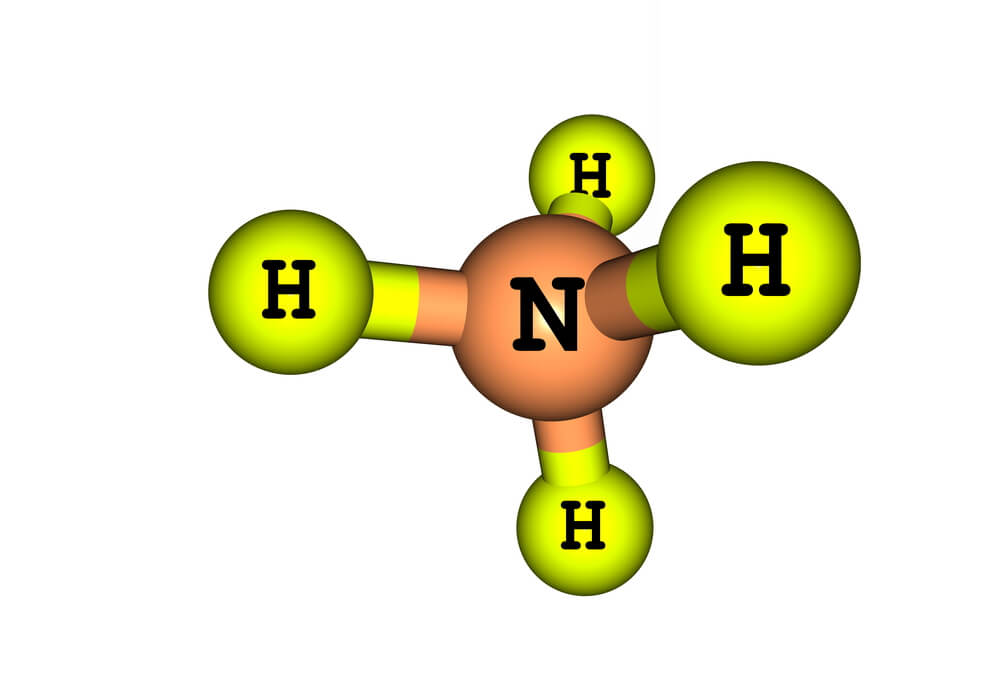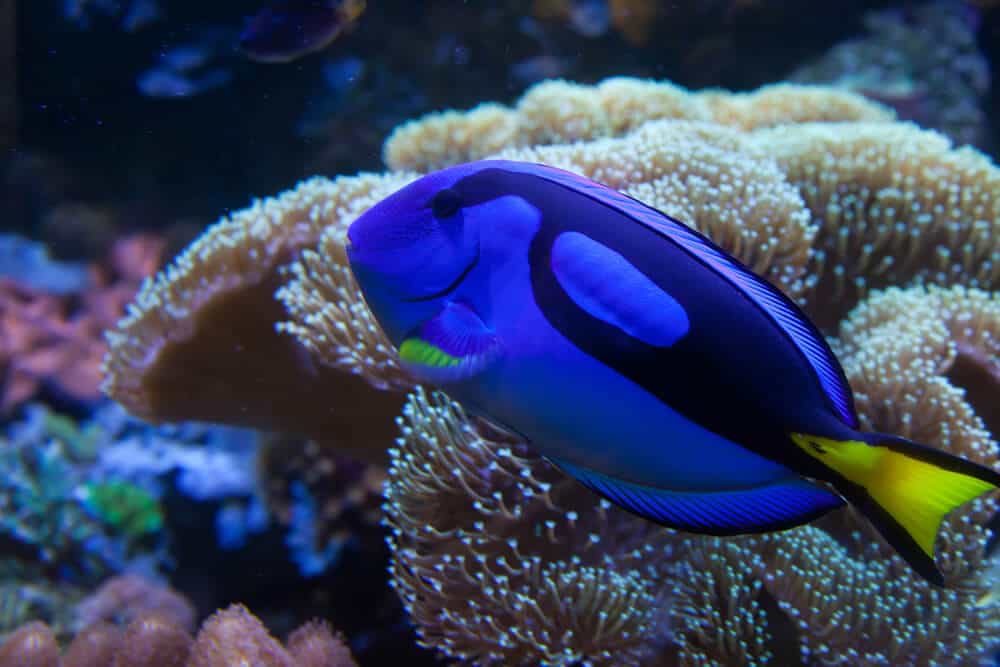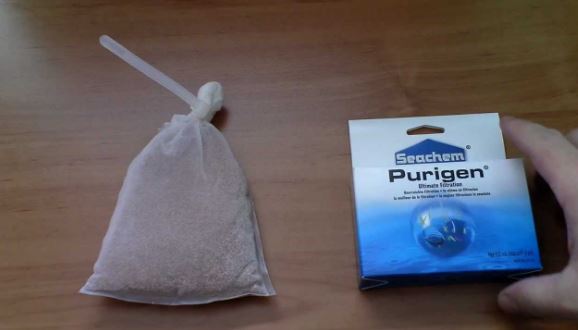
Ammonia and nitrite are 2 things you don’t want in your tank.
If you have them, even in the smallest quantities, then you should be worried. That’s because both are silent, invisible assassins that will kill your fish.
And that means you need to save your fish from ammonia and nitrite.
We’ve put together a list of the 7 most effective ways to do exactly that.
Contents
1. Understanding Ammonia and Nitrite in Your Tank
Both ammonia and nitrite are waste by-products in your aquarium. But unlike nitrate, which can be a good thing to have in your tank, ammonia and nitrite are very, very bad for your fish.
So you need to control your ammonia and nitrite levels. You also need to do that for nitrate, but it’s a little different. For this post, let’s just focus on the 2 very bad ones!
Ammonia and nitrite have different effects on your fish. So let’s look at what ammonia does first.
What Are the Harmful Effects of High Ammonia Levels?
At very low levels, ammonia will burn your fish’s gills. This makes them red and inflamed.
If you notice your fish’s gills are going red, then you need to act very, very fast. Your fish are already under a lot of stress by this point. And if you don’t get rid of the ammonia, they will die.
Ammonia poisoning is a slow, painful death.
The more ammonia your fish are exposed to, the more it damages their organs and their brains. Eventually, the damage is bad enough for your fish to die.
What Are the Harmful Effects of High Nitrite Levels?
Nitrite, on the other hand, doesn’t burn your fish’s gills or attack their organs.
Instead, your fish are going to absorb the nitrite. And when it reaches their bloodstream, the nitrite stops your fish’s blood from carrying oxygen.
This is also a slow and very painful death.
The more nitrite there is, the less oxygen your fish is getting.
It doesn’t matter if you add oxygen to the water using an aquarium bubbler.
Simply put, nitrite in your tank water makes your fish suffocate.
What’s very scary is that some fish will suffocate even if there’s only 0.29ppm of nitrite in your tank water. That’s less than 1 nitrite molecule in 1 million molecules of water!
What Causes Ammonia and Nitrite?
No matter how clean your tank is, there’s always going to be some waste in it.
Things like fish poop, uneaten fish food, dead plant leaves, and decaying algae are all waste. You’ll also get waste if you don’t clean your filters.
That waste creates ammonia.
And if you remember from our guide on “How to Master the Nitrogen Cycle of Your Aquarium”, ammonia is one of the first steps to create a healthy tank.
But remember – you should only have ammonia in your tank when you start the nitrogen cycle! And that’s something you need to do when you first get your tank.
A very important part of the nitrogen cycle is letting good bacteria grow in your tank. Your biological filter media should have a lot of those bacteria in it! And some of those bacteria feed on ammonia.
When they feed on the ammonia, bacteria turn it into nitrite.
And that’s how you end up with nitrite in your tank too!
What Should My Ammonia and Nitrite Levels Be?
You might think that because there’s always going to be some waste in your tank, it’s okay to have a little bit of ammonia and nitrite.
But that’s very, very wrong.
The only time you should have any ammonia or nitrite in your aquarium is when you’re busy doing your first nitrogen cycle. Hopefully, you don’t have any fish in your tank when you’re doing that!
Once you add fish, your ammonia levels should be zero. And your nitrite levels should be zero too.
But ammonia and nitrite are invisible. By the time you start to see their harmful effects, it’s almost too late.
That’s why it’s very important for you to use an aquarium test kit.
You should test your water a few times every week to check for ammonia and nitrite. If you see more than 0 parts per million (ppm) of either ammonia or nitrite, then you need to act fast.
2. Reducing Ammonia and Nitrite Levels
Remember, the more ammonia there is in your water, the more nitrite there will be too.
So don’t wait until you find nitrite when you use your aquarium test kit.
As soon as you see ammonia, start using these 7 effective ways to save your fish.
#1 – Keep Your Tank Clean
You should keep your tank clean in any case.
Regular maintenance is a very, very important step in making sure you have a healthy tank. And if you keep it clean enough, you might not have to worry about ammonia or nitrite spikes in the first place.
But life happens…
Sometimes we get very busy with work and family, and don’t have time to clean our tank every week. Or maybe you go away for a little while no one is cleaning your tank for you.
That means all the waste in your tank is building up.
And as you know by now, more waste = more ammonia. And more ammonia = more nitrite.
Maintain your plants
Just like you have to sometimes trim the trees and bushes in your garden, you need to do some pruning on your aquarium plants.
If you see that there are dead or dying leaves or stems, cut them off and throw them away.
Use a gravel vacuum
The gravel at the bottom of your tank can very quickly become a dump that’s full of waste. So the best idea for you is to buy a gravel vacuum and use it every time you change the water. (We’ll talk more about water changes in a little bit!)
Clean your filter
This is very, very important.
You know how your vacuum cleaner gets too full of dust and other waste if you don’t clean it out? When that happens, your vacuum doesn’t work properly anymore.
And it’s the same with your tank’s filter! So you need to clean it every now and again. (We’ll talk more about how to clean your filter properly a little later too!)
Use an intake sponge filter
One way to make cleaning your filter easier is to make sure it doesn’t get dirty too quickly.
The easiest way to do that is to use a sponge to cover your filter’s intake. That way, the sponge traps a lot of the waste even before it reaches your mechanical filter media.
Now all you need to do is replace the sponge instead of taking your filter apart to clean it so often!
#2 – Don’t Overstock Your Fish (and Don’t Feed Them Too Much Either)
Fish poop and uneaten fish food are 2 of the biggest forms of waste in your tank.
And remember – that waste becomes ammonia and nitrite!
So, as part of keeping your tank clean to avoid ammonia or nitrite spikes, you should be careful about how many fish you have. You should also be just as careful about how much you feed them.
The more fish there are, the more poop there is.
So your tank should be bigger than what your fish need. If you can safely fit 20 fish into your aquarium, stop when you have 15.
Your filter should also be more powerful than what your tank actually needs. Not a lot more powerful – just a little bit more.
The less fish you have, the less poop there will be. And if you’re not feeding them too much, then they won’t poop too much either. There will also be less uneaten food going to waste.
#3 – Change Your Water
Water changes are another important part of proper tank maintenance. You should already be replacing 10% to 20% of your water every week.
But if you notice that your nitrite levels are higher than 0ppm, it’s time to do a water change of 30% to 50%. And if you’re also finding ammonia in your tank, then you need to change at least 50% of your water.
What this does is dilute your ammonia and nitrite levels. Immediately, you’ll have less of both in your tank.
It’s won’t get rid of all the ammonia and nitrite in your tank, though. But it does help a lot.
There 2 very, very important things you need to remember when doing a water change to help save your fish from ammonia and nitrite.
First, tap water also has ammonia in it! So before you add it to your tank, you need to use your test kit. Otherwise, you’ll only be helping a very little bit.
Second, tap water also has a whole lot of other nasty contaminants in it. Chlorine is one of the worst. That’s because chlorine will kill the bacteria living in your biological filter media (BFM).
Which brings us to our next point.
#4 – Be Careful Not to Kill Your Bacteria!
If your bacteria are dead, they can’t help you get rid of ammonia and nitrite. And you’ll have to start your nitrogen cycle from scratch too.
The easiest way to kill your bacteria is, of course, to use regular tap water when you change your tank’s water.
What you should do instead is buy a reverse osmosis water filter. That will get rid of the chlorine and the ammonia in your tap water at the same time. You can also use a de-chlorinator to help get rid of the chlorine.
Another very common way to kill your BFM’s bacteria is to wash your filter in tap water. That’s never, ever a good idea!
Instead, when you replace some of your tank water, keep the water you took out aside. A bucket makes this very easy. You should then rinse your filter media in that water instead of under the tap.
Take a look at our article on “How to Change Your Filter Without Losing Bacteria” for more tips!
#5 – Use an Extra Cycled Filter
This will only work if you already have another tank that doesn’t have any ammonia and nitrite.
That tank already has a healthy nitrogen cycle. And that means there are plenty of bacteria that feed on ammonia and nitrite! So you can “cheat” a little by using that filter to colonize the one in your tank that has a problem.
It isn’t always possible to just take the cycled filter out and put it into your other tank, though. If you have fish in the mature tank, then this is actually a very bad idea.
Instead, you can use some of the cycled filter’s BFM.
Another similar way is to use a sponge again. Let a sponge colonize in the healthy tank and move it over to the tank with ammonia and nitrite. This will help a lot.
Don’t worry if you can’t get a cycled filter to help. You can still use the other 6 effective ways on our list!
#6 – Use a Water Conditioner
Water conditioners are like little miracles in a bottle.
Just like you’d use a cycling product to add more ammonia to a new tank, you use a water conditioner to get rid of ammonia, nitrite, and even nitrate.
And the 2 products are almost the same thing. Cycling product helps to create ammonia and nitrifying bacteria, and water conditioner adds only nitrifying bacteria.
What happens is the water conditioner binds itself to the ammonia, nitrite, and nitrate in your tank. This makes them harmless so they can’t hurt your fish. Your bacteria can then turn the ammonia into nitrite and the nitrite into nitrate.
Some water conditioners will also help your BFM to get rid of the nitrate. Others will turn the nitrate into a gas so that it rises to the water surface and dissipates into the air instead.
This can be very important if your nitrate levels are too high.
The best part is, some water conditioners are really, really great. They can save you a lot of money by removing ammonia, nitrite, and nitrate – all in one! And some of them even act as a de-chlorinator.
So when you put it in your bucket of tap water to get rid of the chlorine while changing your tank’s water, it will help you get rid of the other problems at the same time.
See also:
5 Best Tap Water Conditioners –Indispensable Things For Your Fishtank (2019-Review)
#7 – Use Ammonia-Removing Filter Media
Last, but not least, you also have the option of adding a special type of BFM to your biofilter.
There are some types of BFM that are better than others at getting rid of ammonia.
It won’t help with nitrite, unfortunately, but if you do use an ammonia-removing filter media, then you’ll have less ammonia. And of course, less ammonia means less nitrite!
>> Explore 4 best biological filter media for your filter.
3. Conclusion
So there you have it – the 7 most effective ways to save your fish from ammonia and nitrite.
If this is your first tank and you’re struggling to get your ammonia and nitrite levels down after starting your first nitrogen cycle, then these steps will help you to avoid New Tank Syndrome.
And if it’s already a mature tank, then they’ll help you save your fish from Old Tank Syndrome. It’s almost exactly the same as New Tank Syndrome, of course.
Just remember that none of these 7 tips are going to be a quick-fix for solving your ammonia and nitrite problem.
The closest you’ll get to a quick fix is the water conditioner. But if you don’t solve the problem that’s creating a lot of ammonia, it won’t work for very long.
So as always, we recommend that you use as many of these tips as possible at the same time.







